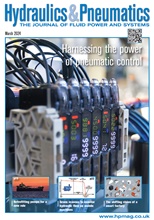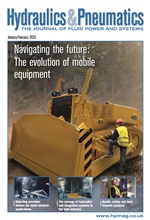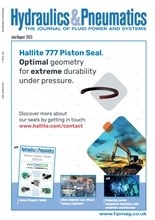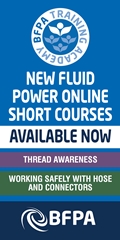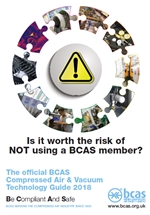- Home » Editorial » Hydraulics
Getting the sealing system team right
Effective sealing in today’s demanding hydraulic applications requires seals and lubricant to work together. Holger Jordan, segment manager fluid power Europe for Trelleborg Sealing Solutions, outlines how ‘Lubrication Management’ is helping make this happen.
The performance requirements of multiple sealing systems for reciprocating movements are continuously increasing with friction, wear and service time being key performance criteria.
Lubrication Management involves adjusting lubrication conditions of all single sealing elements within a sealing system so the load on each element can be reduced and the performance in terms of friction-wear-lifetime can be optimised.
When engineering a sealing system, all elements within the sealing system; the seals and lubrication, or pressure fluid, in particular, must work together as a team. The pressure fluid can be seen as both a challenging element and a supporting team member. The pressure is the load and challenge while the fluid in the contact area between seal and counter surface is the supporting partner in reducing friction and wear by lubrication.
Best practice in demanding fluid power sealing applications is a primary and a secondary seal. The primary seal does the sealing job for as long as possible and the secondary seal is the redundancy, there when it is needed. The challenge for this secondary sealing element is length of life under dry running conditions. The more effective the primary seal is at sealing in lubricant to the hydraulic system, the drier the running conditions of the secondary seal. Starvation of lubrication can lead to wear issues that come in to play in the case of a needed redundancy.
Dilemma
This dilemma in terms of optimising the performance of the primary and secondary seal brings us to the new discipline of ‘Lubrication Management’, where the risk of leakage of lubricant is balanced to ensuring performance of the primary seal and the extended life of the secondary seal. This is achieved by allowing a better, thicker oil film under the most pressure loaded first sealing element to reduce the load on that seal. The fluid film volume transferring past the primary seal is then controlled, normally with an integrated check valve in the primary seal, to the contact area of the secondary seal to the counter surface. Innovative sealing profiles such as Turcon Stepseal V and Zurcon Buffer Seal can perform this Lubrication Management task.
The Lubrication Management principles have been tested to determine the optimum method of control in terms of wear inhibitors and lubrication type. For instance, the reduction in interference in a test using a polyurethane Buffer Seal, compression set behaviour was reduced by almost 50% simply with the addition of a wear inhibitor and partner lubrication. Overall, reduction ratios in friction of about 50% were achieved and taking the whole sealing system into consideration, the reduction can even be up to 70%.
Establishing that friction and wear are significantly influenced by Lubrication Management, the added value for the customer is in improved wear resistance and performance of the secondary seal in need of redundancy. This satisfies many of the demand-driven trends, which are currently under discussion in the world of fluid power.
These trends include reduction of size and weight of hydraulic systems leading to an elevation in pressure and increases in speeds of hydraulic applications that means that polyurethane seals reach material limits. The sealing system in both cases can be improved through Lubrication Management.
Another issue is the coating of counter surfaces in hydraulic applications. These are often decided for technical reasons without any consideration of the sealing system, but can be a limiting factor in terms of the service life of seals within an application.
Spray coatings, such as High Velocity Oxygen Fuel (HVOF) coating, differ a lot compared to standard galvanic processes such as hard chrome plating. The big difference in seal performance in view of a service time is related to the completely different surface topography of the differing coating technologies.
Roughness characteristics like embedded holes in the counter surface are a general challenge for sealing systems, as hole edges on the contact area can act like a knife, cutting the seal as it passes the holes, causing abrasive wear on the seals and wearing them out rapidly.
The cost related to modifying coatings or post processing to prevent wear can play a significant role in competitiveness on the international market. Implementing Lubrication Management on the sealing system can give more freedom in discussion of limits for seal performance in relation to roughness specifications, potentially lowering total cost of hydraulic systems.
Teamwork
Teamwork is undoubtedly important in optimising the performance of sealing systems in fluid power applications. Not only for the team designing the application with the customer but between the seals and lubrication in the sealing system itself.
It is important to ensure development of the most effective system in terms of operation, wear resistance and limitation of leakage that customers work with a seal supplier like Trelleborg who can bring a wealth of knowledge, test results, seal profiles and materials to each individual hydraulic system design, including an understanding of Lubrication Management.
-
Smart Manufacturing & Engineering Week
05 - 06 June, 2024
NEC, Birmingham -
HILLHEAD 2024
25 June, 2024, 9:00 - 27 June, 2024, 16:00
Hillhead Quarry, Buxton, Derbyshire UK



